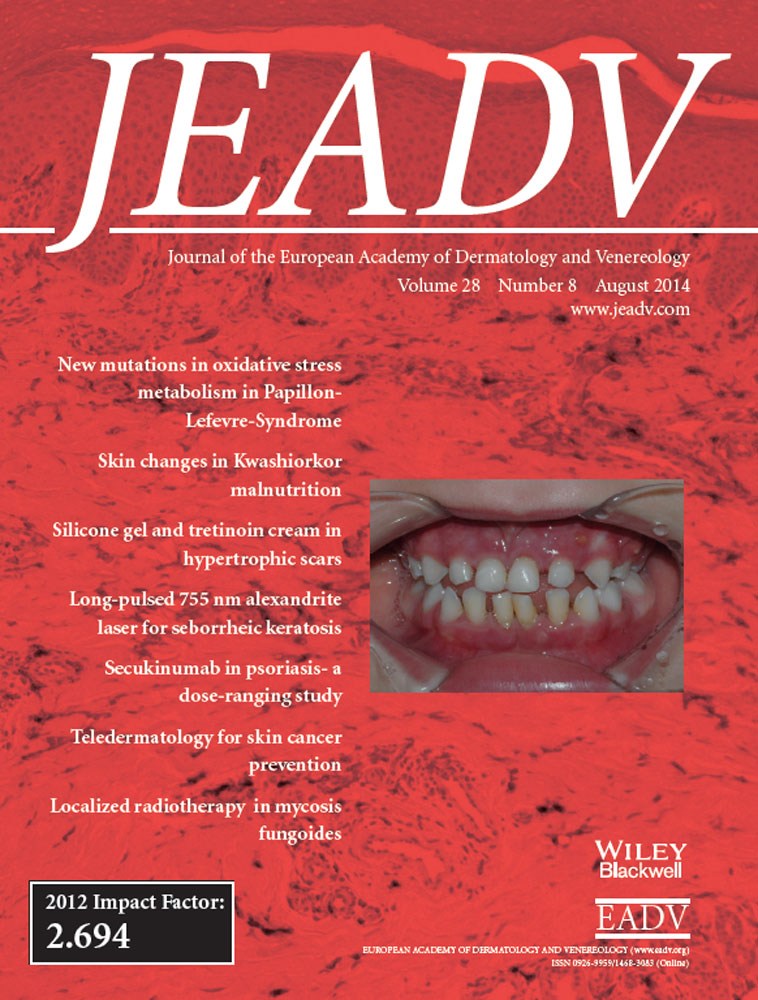UV-induced alterations of the skin evaluated over time by reflectance confocal microscopy
Conflicts of interest
None declared.Funding sources
None declared.Abstract
Background
Ultraviolet radiation (UVR) induces various alterations of the skin and plays a decisive part regarding the development of melanoma and non-melanoma skin cancer. For a closer examination of these phenomena in vivo reflectance confocal microscopy (RCM) is one of the most eligible options as it represents a diagnostic tool that allows a non-invasive examination of the skin, showing microanatomical structures and individual cells.
Objectives
The aim of this study was using RCM to observe alterations of the skin induced by UVR and to describe the development of these changes. In addition, the findings were compared with histological examinations of the same area.
Methods
A small area in the gluteal region of 10 healthy subjects was exposed to a threefold individual minimal erythema dose of solar-simulated UVR. The following development of the sunburn reaction was evaluated with RCM 1, 24, 72 h and 1 week after UVR exposure. Furthermore, RCM images of unexposed skin were obtained, serving as a reference. To contrast histological examination with RCM, punch biopsies were performed at each point in time. The obtained data were interpreted regarding histological and RCM-based criteria on sunburn reaction.
Results
All important UVR-induced alterations of the skin could be shown in RCM beginning with an inflammatory reaction (inflammatory cells, vasodilatation, oedema), containing the formation of microvesicles, followed by the appearance of apoptotic keratinocytes (sunburn cells), activated melanocytes and at last, loss of the epidermal structure. There was an excellent correlation between RCM and histological features.
Conclusions
Reflectance confocal microscopy is a highly valuable tool for non-invasive monitoring of UVR-induced changes of the skin over time. Furthermore, RCM provides a more detailed visualization of inflammatory cell formation and epidermal blood flow than histological examination can.




